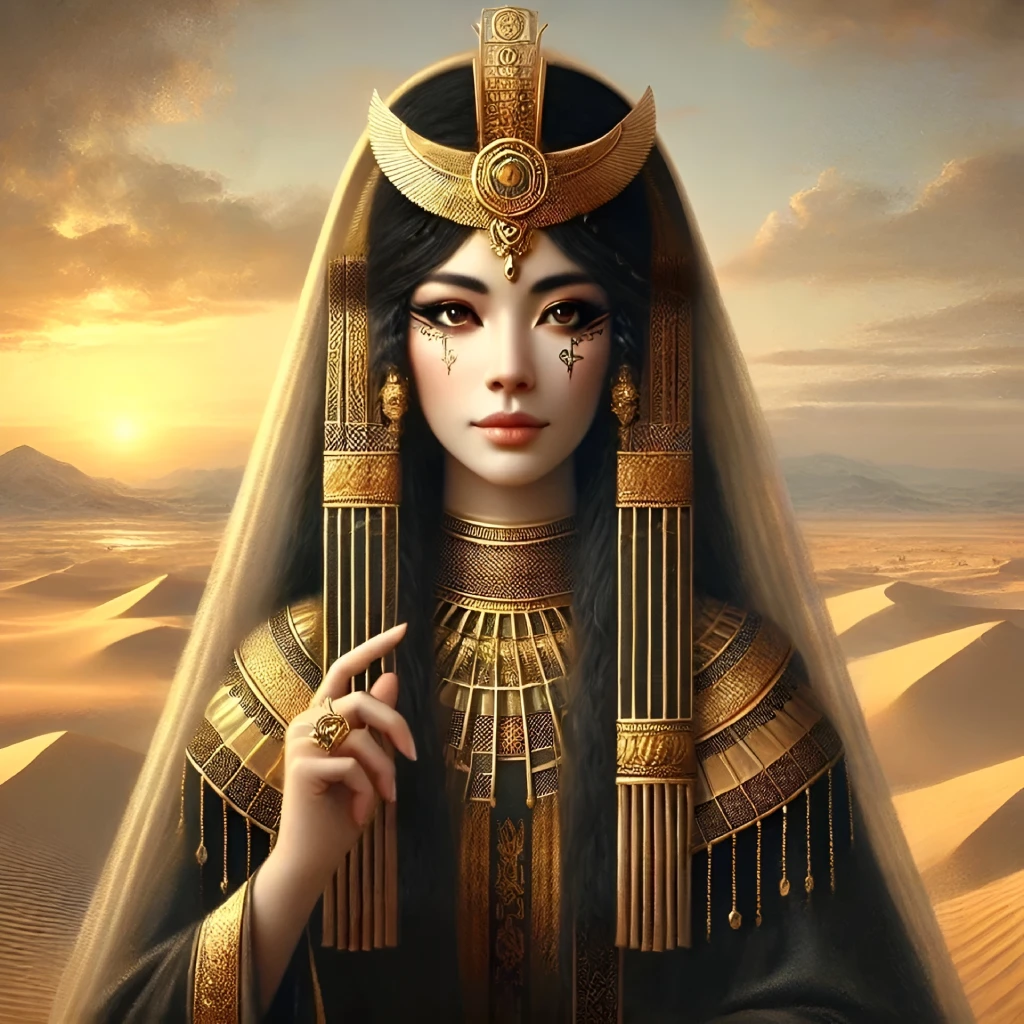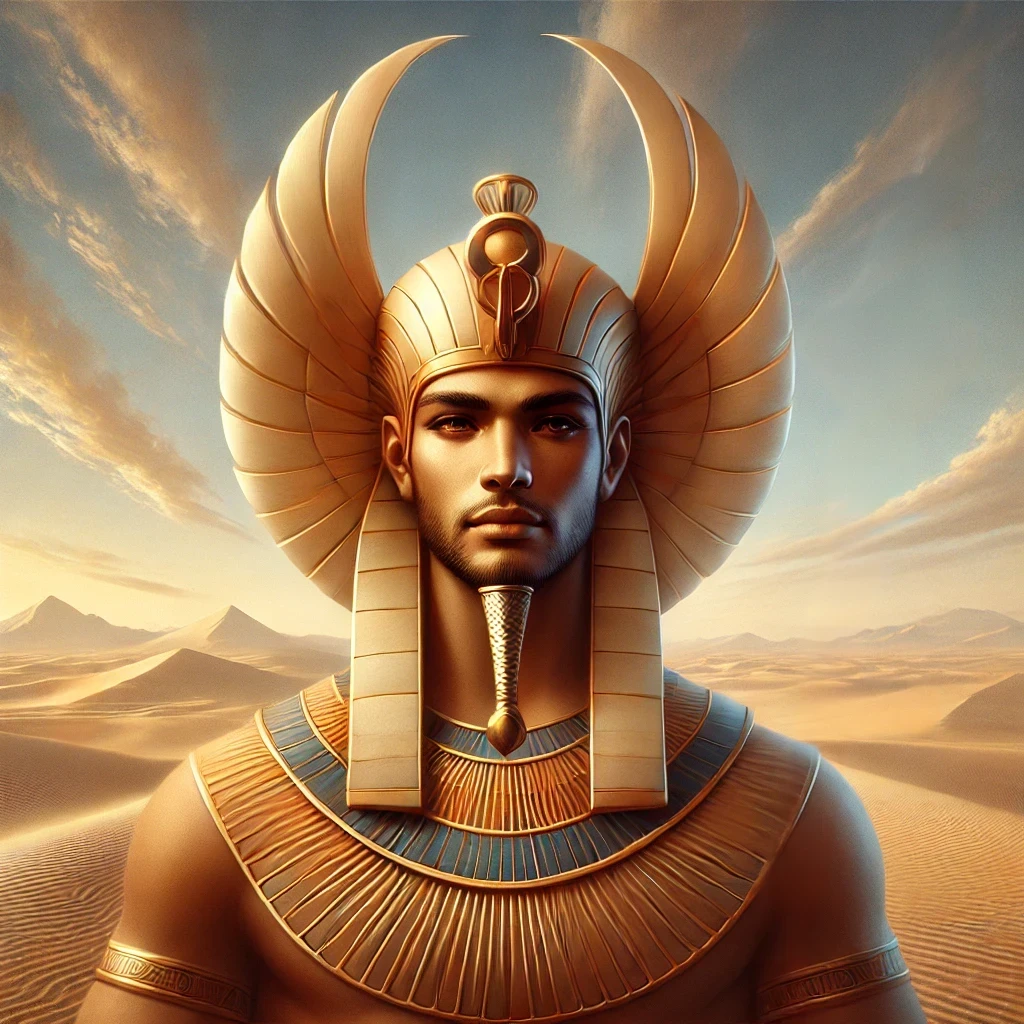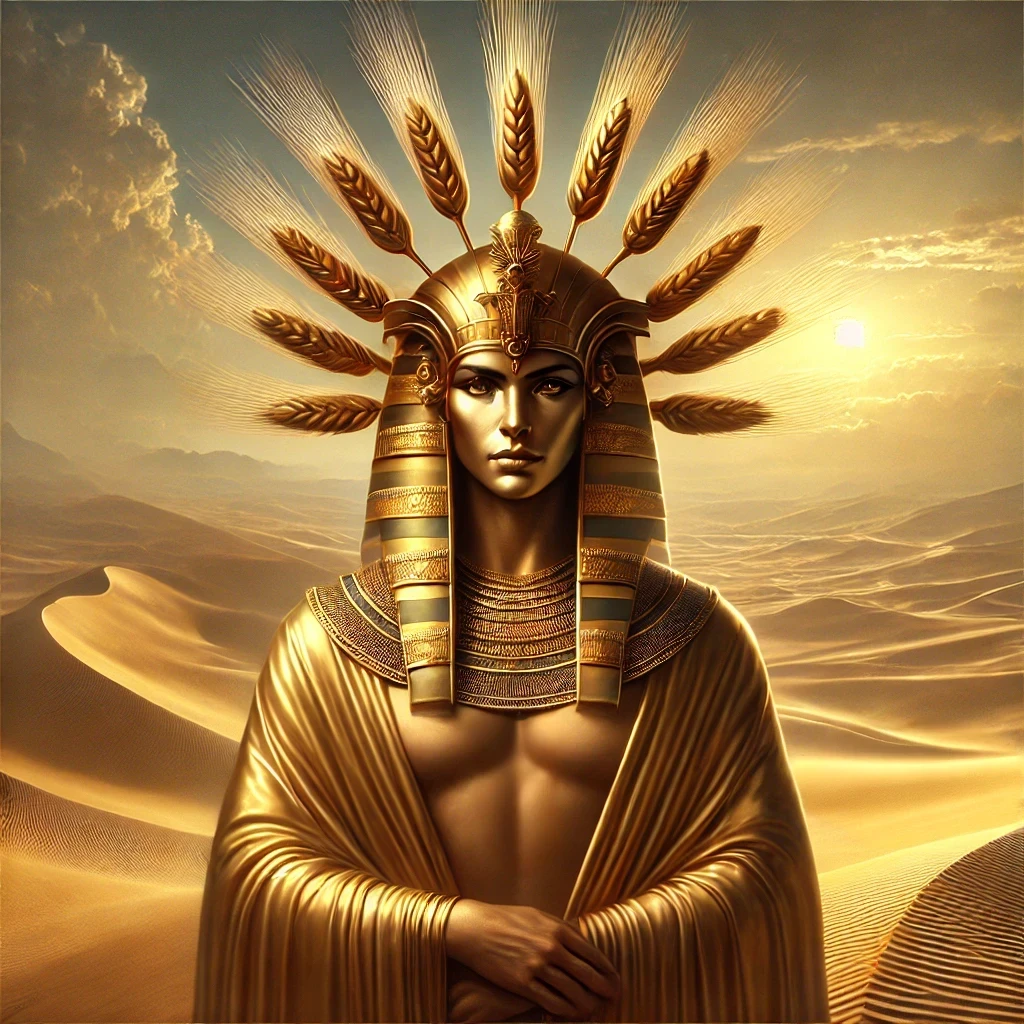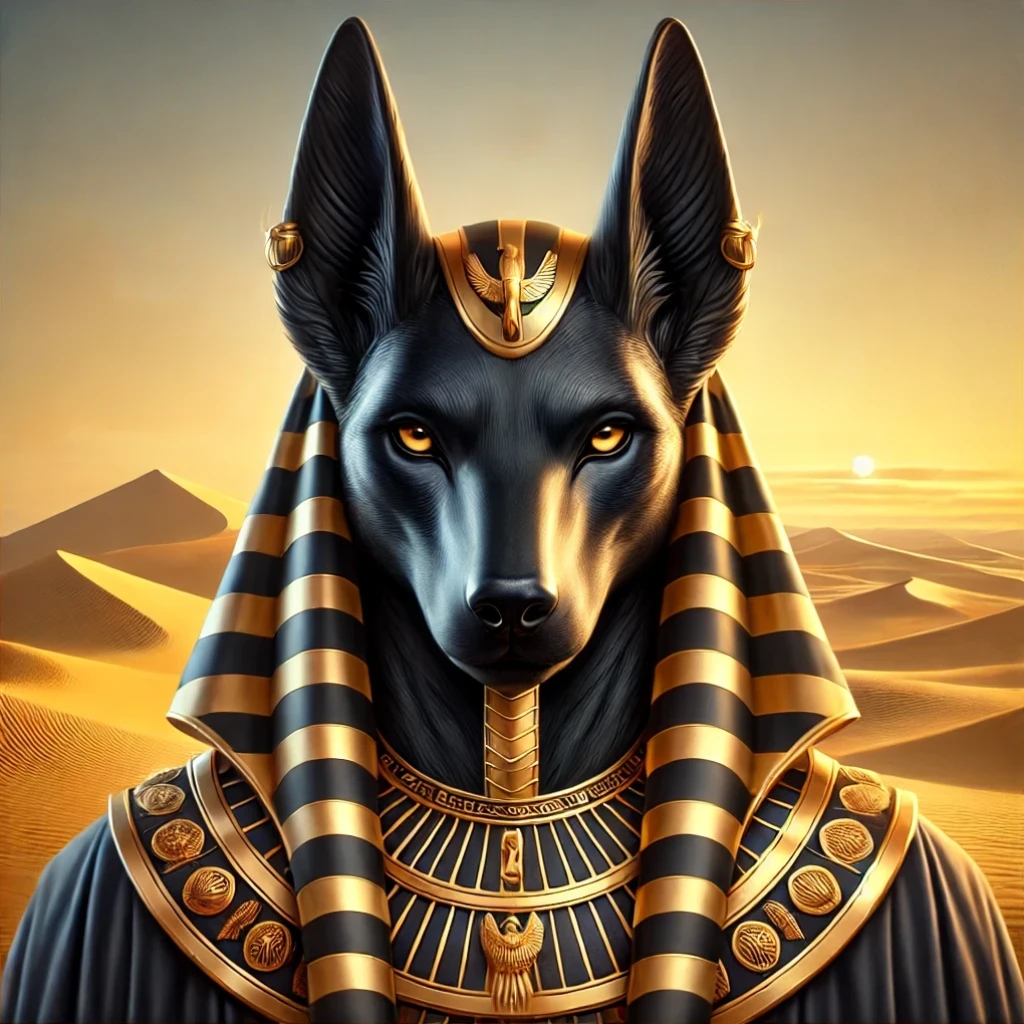Anput is a lesser-known but significant deity in ancient Egyptian religion, primarily associated with funerary practices and the protection of the dead. Her name, derived from the Egyptian “jnpwt” (also transliterated as “Inpwit”), is the feminine counterpart to Anubis, the god of embalming and mummification. Often depicted in relation to her consort, she holds a distinct role within the pantheon, embodying aspects of protection, purification, and transition. Titles attributed to her, such as “Mistress of the West” and “Guardian of the Necropolis,” reflect her deep connection to the afterlife and the journey of the deceased. Despite her subtle presence in Egyptian mythology, she played a crucial role in the spiritual framework that governed ancient Egyptian beliefs about death and resurrection.
Origins
Historical Roots
Anput’s origins are firmly rooted in the religious traditions of ancient Egypt, particularly in relation to the cult of Anubis. Her earliest attestations date back to the Old Kingdom (c. 2686–2181 BCE), where she appears in association with mummification rites and the preservation of the body for the afterlife. Her role, however, remained largely secondary compared to more prominent deities like Osiris and Isis.
Geographic Significance
She was primarily worshiped in Upper Egypt, particularly in the 17th Nome, where Anubis had a significant following. Shrines and inscriptions linked to her presence have been found in Abydos and Saqqara, both major centers of funerary activity. Inscriptions from these sites indicate that she was invoked in burial rituals and played a role in guiding souls to the afterlife.
Evolution Over Dynasties
Anput’s veneration persisted through the Middle Kingdom and New Kingdom, with shifting religious beliefs shaping her role. Over time, she was increasingly merged into the broader Osirian funerary cult, which overshadowed her independent worship. By the Late Period, her worship was largely symbolic, preserved in temple inscriptions and religious texts rather than in direct cult activity.
Appearance
Depictions in Art
Anput is often portrayed as a woman wearing a headdress featuring the jackal, a symbol shared with her consort. In some instances, she appears as a female jackal or a woman with a jackal’s head, reinforcing her role as a guardian of the dead. Unlike Anubis, who is often depicted performing embalming rites, she is frequently shown in a more passive role, standing or seated, overseeing funerary rituals.
Symbolic Attributes
In artistic representations, she may carry a scepter or an ankh, emphasizing her protective and life-affirming aspects within the funerary tradition. Her imagery is closely aligned with that of Anubis but retains distinct feminine characteristics, reflecting her nurturing yet formidable presence.
Variations in Iconography
Different regional styles and periods of Egyptian history present slight variations in her depiction, sometimes emphasizing her more human aspects, while others enhance her animalistic features. Some representations show her veiled, possibly symbolizing the hidden nature of death and the mysteries of the afterlife.
Abilities
Guardian of the Dead
As a protective deity, she was believed to guard the tombs of the deceased, ensuring their safe passage into the afterlife. This role made her a key figure in funerary rituals.
Purification and Embalming
While Anubis oversaw the embalming process, Anput played a complementary role in purification rites, ensuring that the body and soul were prepared for judgment before Osiris. It is believed that she assisted in preparing the sacred oils and resins used in mummification.
Protection in the Afterlife
Ancient texts occasionally reference her role in guiding and defending the deceased against malevolent forces in the underworld, safeguarding their journey through the Duat. Her association with spells and protective amulets suggests she was invoked to ensure a smooth passage for the departed.
Domain
Funerary Realm
She presided over aspects of mummification and burial, ensuring that the dead received proper rites to enter the afterlife unscathed.
Transition Between Worlds
Beyond physical preservation, she symbolized the transition between life and death, acting as a bridge between the mortal realm and the Duat, the Egyptian underworld.
Influence on Funerary Rites
Her role in burial ceremonies extended to overseeing sacred chants and protection spells designed to ward off evil and ensure a smooth passage into the next world..
Myths
Association with Anubis
Anput’s most notable mythological role is as the consort of Anubis. In certain traditions, she is considered the mother of Kebechet, a minor deity associated with the purification of the deceased’s internal organs.
The Role in Osirian Mythology
Though not central to the Osirian mythos, she is sometimes linked to the wider pantheon of gods involved in the resurrection of Osiris, supporting her association with regeneration and renewal.
The Forgotten Tales
Lesser-known texts and inscriptions suggest a deeper involvement in guiding souls and acting as an intermediary in divine judgments, though these references remain fragmentary.
Symbolism
Jackal Symbolism
Like Anubis, her connection to the jackal underscores her role as a guardian of the dead and protector of burial sites.
Associated Objects
The scepter and ankh frequently appear in Anput’s iconography, reinforcing her connection to divine authority and the cycle of life and death.
Colors and Textures
Black, the color of the fertile Nile silt, is often linked to her, symbolizing rebirth and the promise of eternal life.
Sacred Plants and Animals
Certain plants and animals were associated with her, such as myrrh for purification rituals and the black kite, believed to represent her protective spirit.
Worship
Temples and Shrines
Though never the center of a major cult, she was venerated alongside Anubis in temples dedicated to mortuary rites, particularly in Abydos and Saqqara.
Ritual Practices
Priests invoked her during burial ceremonies, seeking her protection over the body and soul of the deceased. Her presence was acknowledged in prayers, amulets, and inscriptions within tombs.
Evolution Over Time
Her worship persisted through the Middle and New Kingdoms but declined in prominence as Osirian traditions overshadowed her role. However, in some Late Period and Greco-Roman traditions, she retained an esoteric presence in funerary magic.
Associations
Connections to Other Deities
Anput is intrinsically linked to Anubis and Kebechet but also holds indirect connections to Osiris and Isis through her role in funerary practices.
Role Among Lesser Deities
Though not as widely worshiped as Isis or Hathor, she represents an essential aspect of the mortuary tradition, emphasizing the care and protection of the dead.
Ties to Regional Cults
Some local cults associated her with lesser-known chthonic deities, possibly blending traditions from earlier pre-dynastic periods.
Legacy
Decline of Worship
With the gradual decline of traditional Egyptian religion, Anput’s worship diminished, especially as Greco-Roman influences reshaped Egyptian religious practices.
Later Interpretations
During the Ptolemaic and Roman periods, Anput was sometimes syncretized with other goddesses, including Isis and Nephthys, due to their shared protective roles in funerary customs.
Modern Awareness
Today, Anput remains a lesser-known figure in Egyptology but retains significance in academic discussions on Egyptian funerary religion. She is occasionally referenced in literature, media, and contemporary spiritual practices focusing on ancient Egyptian traditions.
Trivia
- Shared Names: The variant names of Anput, such as Anupet and Inpewt, reflect regional linguistic differences in ancient Egypt.
- Rare Depictions: Unlike Anubis, Anput is rarely represented in temple carvings, making her one of the less visually documented deities.
- Female Duality: She represents the feminine counterpart to Anubis, balancing the male and female aspects of funerary rites.
- Cynopolis’ Influence: The city of Cynopolis was a major cult center for both Anput and Anubis, highlighting their local significance.
- Connection to Lioness Goddesses: She is sometimes linked to the lioness goddesses Sekhmet and Bastet due to her protective nature.
- Role in Dream Interpretation: Some ancient texts suggest she played a role in dream interpretation and omens.
- Persistence of Imagery: Her name is rarely found in later periods, yet her imagery persisted.
- Independent Cult Theory: Some Egyptologists argue she may have had an independent cult that faded early.
- Influence on Greco-Roman Traditions: Her role might have influenced later Greco-Roman funerary traditions.
- Depictions with the Was-Scepter: Some depictions show her holding the was-scepter, signifying power.
- Night Symbolism: Her connection to the black jackal was also tied to night symbolism.
- Priests and Jackal Masks: Ancient Egyptian priests may have worn jackal masks in her honor.
- Amulets and Personal Connection: Her presence in amulets suggests a personal connection with the common people.



